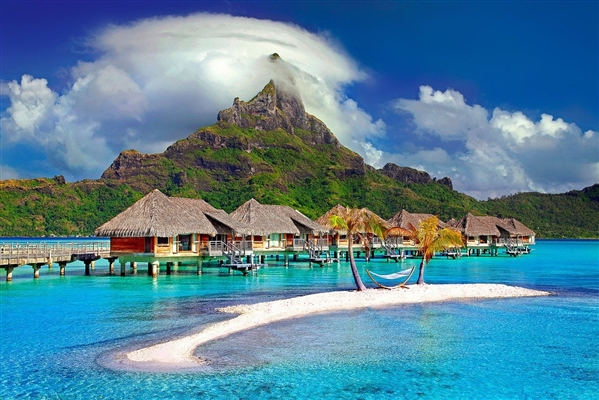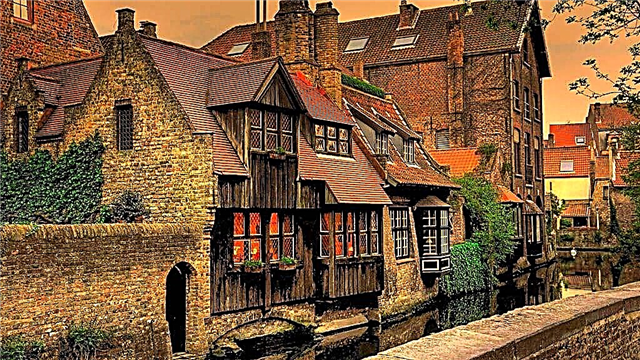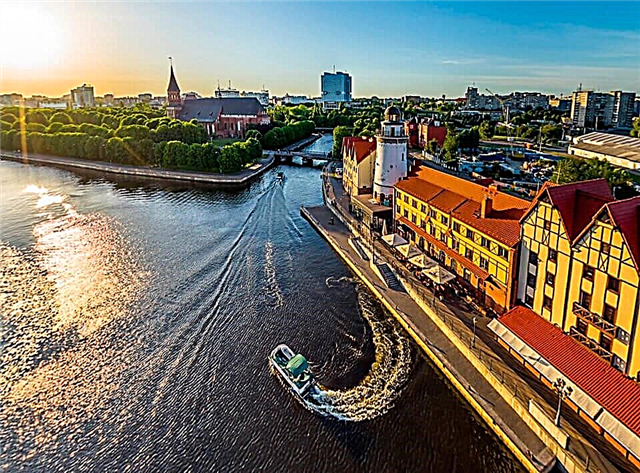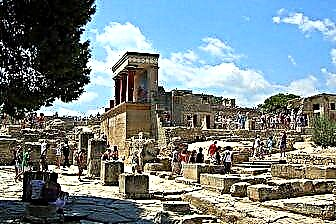The hospitable and sunny island of Crete is one of the most sought after beach destinations in the Mediterranean. The best beaches in the picturesque bays of the island, the azure and clear sea, as well as the historical antiquities of Heraklion, Agios Nikolaos and Rethymno await the tourist.
The first civilization originated in Crete several thousand years before our era. Many historical monuments have come down to us through the thickness of the centuries. Today, guests of the island have the opportunity to explore the mysterious labyrinths of the Palace of Knossos, admire the impregnable Venetian fortresses or look at the ruins of ancient cities.
The swimming season in Crete lasts from late May to late October. The winter months are ideal for many attractions, as even in January, daytime temperatures rarely drop below 15 ° C.

The best hotels and hotels at affordable prices.
from 500 rubles / day
What to see and where to go in Crete?
The most interesting and beautiful places for walking. Photos and a short description.
Heraklion
The ancient historical center of Crete, named after the mythological hero Hercules. According to the "Geography" of the ancient Greek thinker, geographer and historian Strabo, the city already existed in the 1st century AD. and was the seaport of the Minoan city of Knossos. Heraklion at different times was owned by the Arabs, Byzantines, Venetians and Turks. In the Middle Ages, it was home to the largest slave market in the entire Mediterranean. The island was united with Greece only at the beginning of the 20th century.

Rethymno
The city is located in the western part of Crete. It was built by the Venetians during their reign on the island. Many sights of Rethymno have survived to this day, the central place among them is occupied by the Venetian fortress Fortezza, erected at the end of the 16th century. Among the visited and popular places are the Archaeological and Historical and Ethnographic Museums, the ancient Rimondi fountain and the Venetian port.

Agios Nikolaos
A small town in the north of Crete, a well-known and popular tourist destination. The predecessor of modern Agios Nikolaos arose on the site of the ancient Dorian settlement of Lato, but gradually fell into decay. New inhabitants appeared already in the Middle Ages during the Venetian rule. In 1646, as a result of the war with the Turks, the Venetians burned down the settlement. Agios Nikolaos was revived for the third time in the middle of the 19th century.

Water park "Water City"
The water park is located in Heraklion, its territory covers an area of more than 80 thousand square meters. It is the largest water park in Crete. It includes 13 swimming pools and many speed slides of various difficulty levels. Also in the water park there are less extreme attractions, so every visitor will find something to do. There are separate pools and playgrounds for children with a variety of water games.

Knossos palace
An ancient monument to the Minoan civilization that flourished in Crete during the Bronze Age. According to legend, the Palace of Knossos is the same legendary labyrinth where the terrible Minotaur lived. The monster managed to defeat only the hero Theseus. It was the bizarre architecture of the palace-temple with numerous passages, dead ends, rooms and passages that gave birth to the myth of the Minotaur.

The ancient city of Gortyna
The ancient city is 30 km away. from Heraklion, presumably founded in the XX century BC. in the pre-antique era. The settlement has witnessed many civilizations: Mycenaean, Dorian, Greek. During the domination of the Roman Empire, Gortyna was the capital of the island of Crete and the seat of the governor. The city existed until the 9th century AD, in 828 during the Arab conquest of Crete it was turned into ruins.

The sunken city of Olus
An ancient city that went under water around the 2nd century AD. as a result of local displacement of plates of the earth's crust in the region of East Crete. Archaeological finds indicate that Olus was an independent and developed city, where they minted their own coins and maintained friendly relations with neighboring settlements. Foreigners were allowed to settle in Olus, as evidenced by documents found during excavations.

Archaeological Museum of Heraklion
One of the largest museums in Greece, which contains a rich collection of artifacts from the Minoan civilization. The exhibition halls also showcase exhibits from other periods of the island's history from the Neolithic era to the time of the Roman Empire. There are 20 rooms in the museum, arranged in chronological order. During the excavations, new specimens are constantly being found, which replenish the museum collections.

Arkadi monastery
A unique architectural monument that was founded in the 5th century A.D. The monastery church dates back to the 16th century. The monastery is located on the slopes of Mount Ida at a height of 500 meters. In the 17th century, Turkish invaders looted the premises and drove out the brothers, but later the monks were allowed to return. In 1866, during the Cretan Uprising, the monastery withstood the siege of the 15 thousandth Turkish army.

Holy Trinity Monastery
Greek Orthodox monastery of the 17th century. The founders of the monastery are the brothers Lavrenty and Jeremiah, who come from a respected Venetian family. Construction work continued until the second half of the 19th century, as the monastery was repeatedly attacked by the Turks. As a result of such raids, most of the property was looted and burned. It was only after the Cretan Revolution that the monastery was restored.

Preveli monastery
A picturesque 16th century monastery built on the side of a mountain. The monastery is run by the Constantinople Orthodox Church. In the 17th century, the building was destroyed by the Turkish authorities. In the 20th century, Preveli was once again plundered and destroyed by the fascist troops. The cloister was closed in 1970, followed by many years of reconstruction. In 2013, the monastery was opened to the public.

Kera Kardiotissa Monastery
Convent of the XIII century (or X century according to alternative sources). The first written mentions of it date back to the XIV century. Within the walls of the monastery is kept the miraculous icon of the Mother of God of the Heart (Cardiotissa), or rather its copy. The original was stolen in the 15th century and is currently in Rome. It is believed that a copy of the icon also has miraculous properties and is capable of curing diseases.

Fortress Fortezza
The Venetian fort in Rethymno, one of the city's most significant landmarks. It was built in the 16th century. Fortezza rises above Rethymno and can be seen from any part of the city. The fortress was constantly changing its appearance, during the numerous wars with the Turks, the outer walls and buildings suffered. The last restoration lasted almost 20 years, and as a result, Fortezza acquired the look it had under the Venetians.

Kules fortress
Sea fortress in Heraklion, built by the Venetians in the XIV century. Bas-reliefs depicting a lion, the symbol of the Venetian Republic, are embedded in the main walls of the fort. The name "Kules" was given by the Turks, while the creators of the fort themselves used the name "Rokka-al-Mar". That in a free translation from modern Italian means "fortress on the sea." The Turks built a small mosque on the territory of the fortification, and also completed the embrasure and spaces for the placement of artillery.

Frangokastello fortress
A 14th century Venetian military structure on the territory of the Cretan community of Sfakion, which was built to protect against pirate raids. In those days, the fortress was called "Castle of St. Nikita", but the name "Frangokastello" was stuck behind it, which means "castle of the Franks".The fort has withstood many sieges and assaults, but its walls have survived to this day in relatively good condition.

Fortress island of Spinalonga
Spinalonga is a small island in the eastern part of Crete, located opposite the peninsula of the same name. In the 16th century, the Venetians turned this place into an impregnable fortress, which was supposed to protect the settlements from pirates. On the ruins of the ancient acropolis, such a powerful fort was erected that even the troops of the Ottoman Empire, after the capture of Crete, could not take Spinalonga for another 46 years.

Lake Voulismeni
Freshwater lake, around which is located the Greek "Saint-Tropez" - the city of Agios Nikolaos. The reservoir reaches a depth of 64 meters. According to an ancient legend, the beautiful Aphrodite and the hunter Artemis took baths in the waters of Voulismeni. Until the middle of the 19th century, local residents believed that evil spirits lived in the lake. Voulismeni is connected to the sea through a canal.

Lake Kurna
Another freshwater lake in Crete, located in a picturesque green valley. The beaches of Kurna are a great alternative to the seaside resorts of Heraklion and Rethymno. A variety of birds, turtles and fish live on the shores and in the water depths. The tranquility and tranquility of the lake is conducive to long boat trips. Once upon a time there was a temple of Athena Koresia, but the construction has not survived to this day.

Dikteyskaya cave
A cave system located within the Dikteysky mountain range. According to ancient Greek mythology, here the goddess Rhea hid the newborn Zeus from her husband, the god Kronos. The child was destined to overthrow the power of his father and become the supreme god of the entire Greek pantheon. For a long time, the cave bore the name of Zeus and was sacred to the worshipers of the god of thunder.

Lassithi plateau
A fertile plateau in the eastern part of the island, elevated 820 meters above sea level. The plateau is known as the "Valley of a Thousand Mills" (with their help, for a long time, water was extracted for irrigating agricultural land). The valley is home to fruit orchards and large vegetable plantations. The generous lands of the Lassithi plateau began to be cultivated in the days of the Minoan civilization.

Samaria gorge
Natural landmark of Crete, one of the largest gorges in the Greek islands. The length of the tourist route along the gorge is about 16 km. In ancient times, the temples of Artemis and Apollo stood here, as evidenced by the preserved ruins. In the VI century BC. the city of Tarra existed in the Samaria Gorge. Since 1962, the territory has been declared a National Park.

Elafonisi beach
A sandy spit of rare beauty a few tens of kilometers from the resort of Chania, covered with pink sand. Elafonisi is considered by many tourists to be the most picturesque beach in the entire Mediterranean. The delicate pink color comes from the remains of coral and small shells that cover large areas of the spit. The water in the lagoon is always clean, warm and clear. The beach is equipped with everything you need for a comfortable stay.

Matala beach
Beach located in the bay of Messara in the small town of Matala. It is surrounded by rocks in which numerous caves have been cut. It is believed that ancient people originally lived in them. In the early Christian era, the followers of Jesus took refuge in the caves of Matala from persecution. This fact is evidenced by the remains of catacomb temples and burials of believers.

Balos bay
The bay is located in the western part of Crete. Here is one of the most popular and picturesque beaches, which is famous for its purest white sand with pink splashes and magnificent turquoise water. Despite a fairly large number of people who want to swim in the waters of the bay, there is no tourist infrastructure on its shores. In this way, they try to preserve nature in its original form.

Wai palm beach
Beach in Wai National Park. Here grows the largest palm forest in Europe, consisting of the endemic palms of Theophrastus. It is believed that the plantings appeared thanks to the Phoenician sailors. The beach is very popular among tourists, therefore, in the high season, a lot of people always sunbathe and swim here. Particularly picturesque views of Vai can be seen in the rays of the dawn sun.











